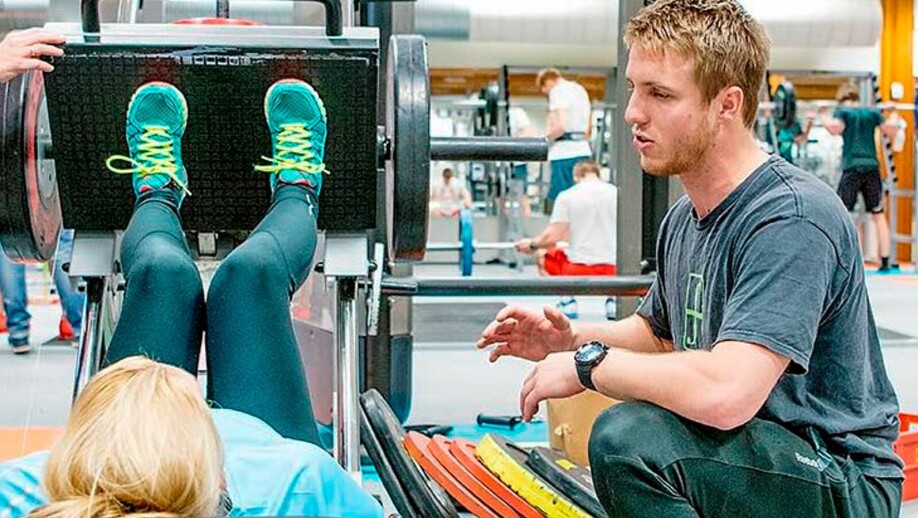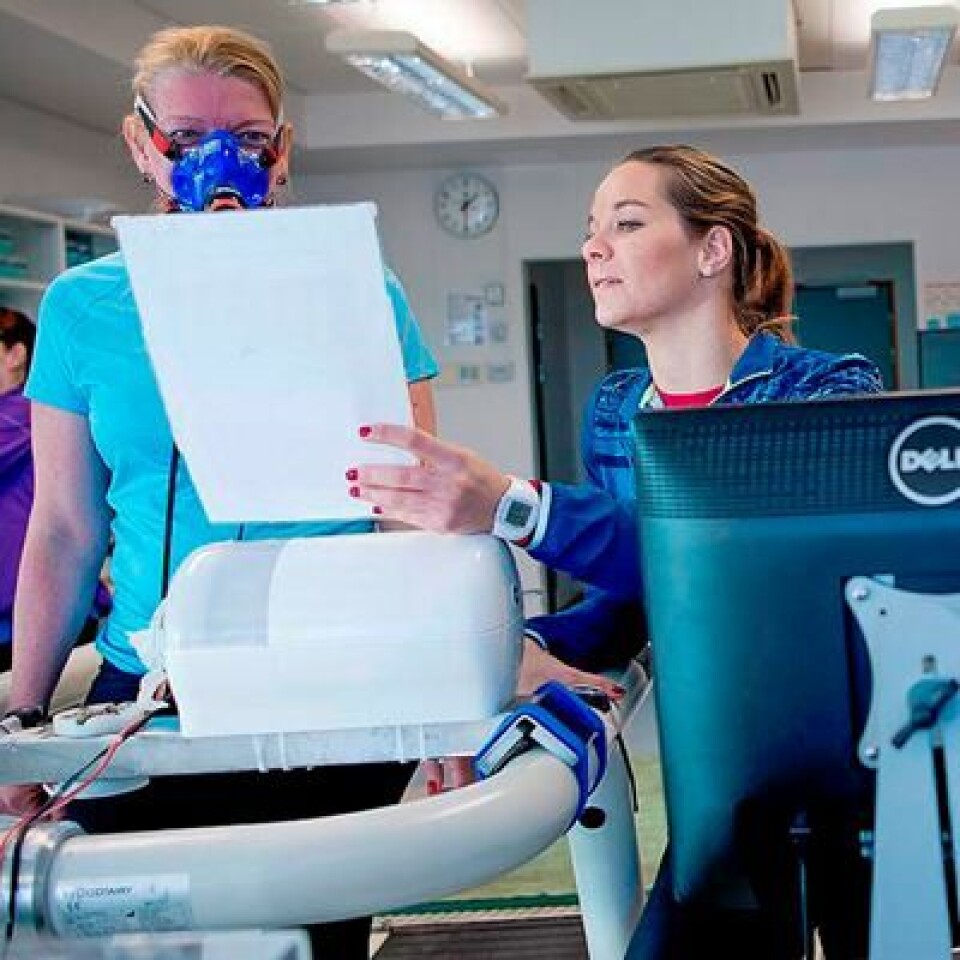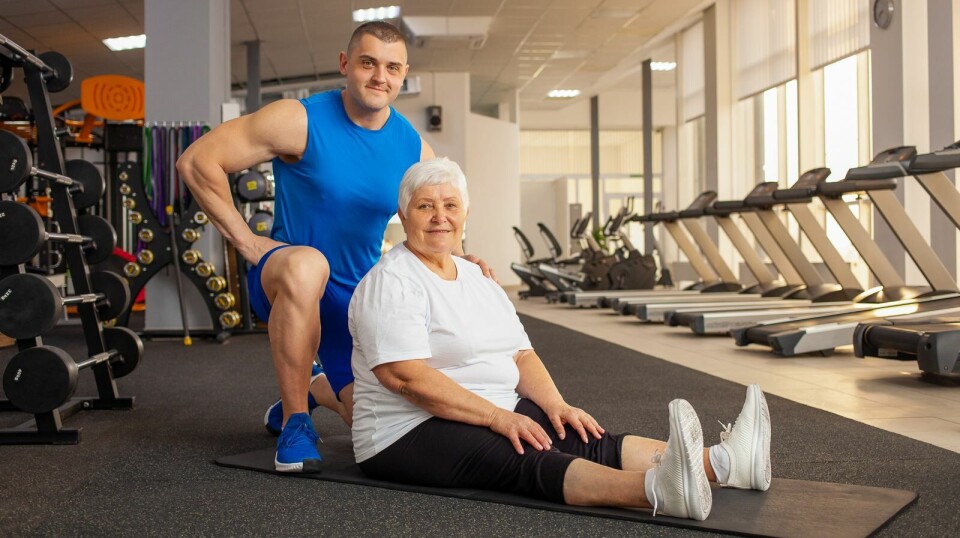THIS ARTICLE/PRESS RELEASE IS PAID FOR AND PRESENTED BY The Norwegian School of Sport Sciences - read more

Why do so many people pay for unused gym memberships?
Have you ever wondered why some people diligently go to the gym while others drop out? Public health would be boosted if we could learn from those who keep going.
What separates those who keep going from the rest of us? The answer is far from obvious. Christina Gjestvang wanted to find the answer and spent several years immersing herself in the fitness industry.

A ‘joy of exercise’ (from Norwegian treningsglede, lit. workout happy) and a sense of acheivement are key concepts. But we will get back to that.
Only one in three of us are active enough
It’s a relatively well-known fact: Few of us are sufficiently physically active. And even though we know that both strength and stamina training are equally important — and we can do both at the gym, regardless of the weather — many of us end up becoming passive members.
This is a bit of a paradox: Why? What can we learn from those who manage to exercise regularly over time? The answer would provide a boost to public health. (And perhaps you could improve both your stamina and your strength).
Even though this is well known, less than one in three adults in Europe actually meet the recommendations from health officials to be physically active at ‘moderate or high intensity’ for at least two and a half hours each week. This corresponds to about 20 minutes a day: A brisk walk to and from the bus could be all it takes.
Gyms can help
“Health authorities and the fitness industry alike note that gyms can contribute towards increased activity levels among the population. I wanted to identify which factors are associated with regular exercise among the few, while the majority don't work out enough or just drop it all together,” explains Christina Gjestvang.
Another reason she considers it important is because gyms are a popular venue for exercise: Nearly one million Norwegians have a gym membership.
The findings from her study are bleak:
- Among the participants (250 novice, non-athletic individuals), only 17 per cent exercised at the gym for two or more days a week in the first year. Previous studies vary from 10 to 37 per cent.
- Previous studies show that most of those who join a gym will stop attending after three to eight months.
- If you also include the exercise the members did outside of the gym, the [number of active participants] increases to 37 per cent.
- Among the participants in the study, only 38 to 46 per cent were active enough to meet the recommendations relating to physical activity (at their respective start dates and after 12 months of going to the gym).

Self-confidence and self-discipline
According to the study conducted by Christina Gjestvang, the most prevalent reasons for people dropping out are a lack of time and a lack of energy. Few of us manage to catch up if we stop [working out] for a few weeks.

Those who succeed report that they enjoy exercising, enjoy challenging themselves, and experience a strong sense of achievement, too. They know that they will manage to keep going. They also get valuable social support from family and friends. Many also consider ‘positive health, physical fitness and better mobility’ to be important factors.
250 people participated in her study. All of the participants were non-athletes who joined a gym and who succeeded to varying degrees. As already mentioned, only one in six managed to keep going over time.
“A key factor is to perceive exercise as enjoyable.”
But what can be done to help more people experience a sense of enjoyment?
“It is partly about them, about self-discipline and believing that they can keep going, believing that you can manage to exercise two or three times each week over time, even if there are periods with less free time and energy for exercise.”
More support should be provided
What about the actual gyms? Presumably there are things they can do to lower the threshold and help people keep going?
“Absolutely. While it falls outside the scope of my study, I think one of the answers can be found in following up. Those who work at the gyms need to become better at regularly providing support and guidance to members. A permanent personal trainer is not a requirement, but I think it could help if we gave more appropriate guidance to [gym] members so that they could increase their own motivation, sense of accomplishment, and experience of this being something they do because they want to,” she says and adds, “The majority of people would undoubtedly find it easier to continue going if they were to arrange scheduled exercise sessions with others. The social aspect is important. Again, it is about making it enjoyable.”
Undeserved reputation
But gyms also have a reputation as a place for the young, muscular and perfect-bodied to gather. Christina Gjestvang thinks that this reputation is undeserved, especially now.
And this is something you believe, even if the study actually shows that those who exercise regularly over time are more concerned with and increasingly appreciate their own body?
“Sure, particularly those who exercise regularly, over time, tend to report this, but if we all experience a more positive attitude to our own bodies, then that is surely a good thing,” Gjestvang stresses.
She says that the industry has done a lot to curb such issues and open its doors to as many people as possible.
“This reputation no longer holds true within the industry. All types of people attend the gym, there are group sessions of different durations and content for various ages and different types of people, there is even childcare available so that the entire family can go.”

Who would you like to see more of at the gym?
“As I have said, physical activity is important for everyone’s health. But, in particular, those who are the least active would benefit the most from getting started, even just a little. Just a little exercise is much better than sitting on the sofa.”
She also notes that strength training becomes even more important the older you become and that there is no upper age limit for going to the gym.
See more content from The Norwegian School of Sport Sciences:
-
Football expert wants to change how people watch football at home
-
Kristine suffered permanent brain damage at 22: "Life can still be good even if you don’t fully recover"
-
Para sports: "The sports community was my absolute saving grace"
-
Cancer survivor Monica trained for five months: The results are remarkable
-
What you should know about the syndrome affecting many young athletes
-
New findings on how athletes make the best decisions





































